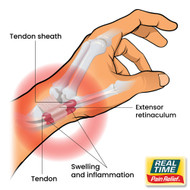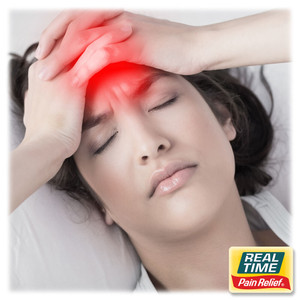Easing the Strain: Understanding and Managing De Quervain’s Tenosynovitis
Posted by Dennis R. Escalera on 28th Apr 2025
What is De Quervain’s Tenosynovitis?
De Quervain’s Tenosynovitis is a painful condition that affects the tendons located on the thumb side of your wrist. Specifically, it involves inflammation of the sheath (synovium) that surrounds the abductor pollicis longus (APL) and extensor pollicis brevis (EPB) tendons. These tendons are responsible for moving the thumb away from the hand and extending it. When the tendon sheath becomes irritated or inflamed, movement becomes painful, especially during gripping or pinching motions.
Though the condition is sometimes referred to as “mommy thumb” due to its prevalence in new parents frequently lifting their babies, it can affect anyone who performs repetitive hand or wrist motions. Workers who use tools, musicians, and individuals engaged in frequent texting or computer use may all be susceptible.
What Causes It?
The exact cause of De Quervain’s Tenosynovitis isn’t always clear, but several contributing factors have been identified:
- Repetitive hand and wrist movements (especially those involving force or thumb motion)
- Overuse injuries from sports, lifting, or daily tasks
- Direct trauma to the wrist or thumb area
- Inflammatory conditions such as rheumatoid arthritis
- Hormonal changes (e.g., during pregnancy)
The repetitive strain causes friction where the tendons pass through the narrow tunnel at the base of the thumb, leading to inflammation and swelling that restricts smooth tendon movement.
Common Symptoms
- Pain and tenderness at the base of the thumb or wrist
- Swelling near the thumb side of the wrist
- Difficulty gripping or pinching
- A “sticking” or “catching” sensation when moving the thumb
- Pain that worsens with activity and improves with rest
A common diagnostic method is the Finkelstein test, where a doctor will ask the patient to make a fist with the thumb tucked inside and then bend the wrist toward the pinky. If this causes pain along the thumb-side of the wrist, De Quervain’s Tenosynovitis is likely.
Treatment Options
1. Conservative Management
In many cases, De Quervain’s can be managed without surgery:
- Rest and activity modification: Avoiding aggravating activities gives tendons time to recover.
- Immobilization: Wearing a thumb spica splint keeps the wrist and thumb in a neutral position to reduce strain.
- Cold packs: Applying ice several times a day can help reduce swelling and pain.
- NSAIDs: Nonsteroidal anti-inflammatory drugs may be used for short-term relief.
2. Physical Therapy
Gentle stretching and strengthening exercises under the guidance of a therapist can restore mobility and prevent recurrence.
3. Steroid Injections
Corticosteroids can reduce inflammation and provide temporary relief, though repeated use is not ideal due to potential side effects.
4. Surgery
If symptoms persist beyond 6 months despite conservative care, surgical intervention may be considered to release the tight sheath surrounding the tendons.
Topical Pain Relief Creams and Lotions with Nature’s Ingredients
One promising non-invasive approach involves using topical pain relief creams or lotions formulated with nature’s ingredients. These products are absorbed directly through the skin to target pain and inflammation at the source, offering a convenient and gentle option for symptom relief.
Here are several key ingredients derived from nature that may support individuals managing De Quervain’s Tenosynovitis:
? Arnica montana
This alpine flower is widely used to reduce bruising, swelling, and joint pain. Its anti-inflammatory properties help relieve the localized soreness that often accompanies tendon issues.
? Menthol (from peppermint oil)
Menthol provides a cooling sensation followed by warmth, which helps interrupt the pain cycle by confusing the nerve endings that send pain signals.
? Calendula officinalis
Often used for wound healing, Calendula also has anti-inflammatory and soothing properties that may benefit irritated soft tissues.
? Witch Hazel
A mild astringent with anti-inflammatory properties, witch hazel may support tissue repair and reduce swelling around the inflamed tendons.
? St. John’s Wort (Hypericum perforatum)
Traditionally used for nerve pain, St. John’s Wort may support tendon sheath discomfort and aid the healing process through its soothing action.
? Turmeric (Curcuma longa)
Its active compound, curcumin, is a well-studied anti-inflammatory agent that may help reduce pain and stiffness in musculoskeletal conditions.
✅ How They Help
These ingredients work synergistically to:
- Decrease localized inflammation
- Improve circulation to the affected area
- Soothe irritated tissues and nerve endings
- Provide fast-absorbing, non-greasy relief without systemic side effects
When used regularly, topical formulations can support your healing plan while offering the benefit of direct, site-specific application.
Everyday Management Tips
- Use ergonomic tools and avoid repetitive strain when possible.
- Take regular breaks from activities that require gripping or twisting motions.
- Apply topical creams 2–3 times a day to manage discomfort during flare-ups.
- Stretch the wrists and thumbs gently throughout the day.
- Maintain good posture to reduce unnecessary upper body tension.
Final Thoughts
De Quervain’s Tenosynovitis is a manageable condition, but early intervention is key. By combining activity modification with physical therapy and ingredient-based topical treatments, most individuals can find relief and return to their routines without invasive procedures.
If your symptoms persist or worsen, consult a healthcare provider to discuss diagnostic imaging or other treatment options.





